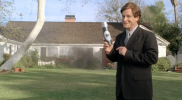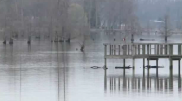BP Oil Spill: A Brief History
It began at 7:55 p.m. on April 20, 2010.
Deepwater Horizon workers analyzed their next steps and considered their examination of the rig as “a good test.” However, at 9:40 p.m., mud flowed up to the floor of the rig and less than 10 minutes later, the first explosion was heard. Mayday was called at 9:52 p.m., and the rig was evacuated. Within hours, 11 men were reported as missing.
Transocean put out a press release the following day, providing a vague outline of the disaster. It announced that a fire was reported aboard the rig, which was located approximately 41 miles off the shore of Louisiana. Transocean also announced that company response teams were working with the U.S. Coast Guard and BP to care for rig personnel.
On the third day of the disaster, the search for 11 missing rig workers ended. At this point, the Coast Guard believed that no crude was pouring into the gulf. Little was known about the blowout at this point.
Chris Reddy, director of the Costal Ocean Institute at the Woods Hole Oceanographic Institution, said that he felt that everyone was “in pretty good hands” regarding the overall spill response.
On April 25, The US Coast Guard confirmed that the well below the exploded rig started to flow at a rate of 1,000 barrels a day. After the rig exploded, it caught fire and burned for over two days before sinking to the bottom of the ocean intact.
At this point, the spill coated 40 square miles of water with an oily sheen.
The rate of the spill was increased to 5,000 barrels a day on April 28. BP CEO Tony Hayward said that the ultimate reason was the rig’s “blowout preventer” failing to engage. It is an accusation that placed blame on Transocean as the rig’s operator. A controlled burn of the leaked oil began, but the slick had expanded to 100 miles. Hayward promised BP and the Coast guard “will clean it up, if we get to that position.” Meanwhile, at least one lawsuit had already been filed, accusing BP of negliegence.
BP CEO Tony Hayward introduced the well-industry term “top kill” to the mainstream when he discussed future possible steps to control the gushing oil. A "top kill" is performed when a large quantity of drilling mud is pumped into the well in an effort to offset the pressure of the gushing oil. Although used frequently in land wells, the tactic had not been tested in deep waters and Hayward was quick to explain that the “top kill” method, along with another strategy involving a 98-ton steel-and-concrete box, would probably not work perfectly the first time.
Interior Secretary Ken Salazar also commented on the spill and said that the White House was making sure that BP was doing what “is required to do under the law.”
Louisiana Gov. Bobby Jindal commented on the extensive oiling of wetlands due to the BP spill. Since the 1930s, Louisiana has lost over 2300 square miles of wetlands, which has made a detrimental impact on the area’s ecosystem. Jindal was proud of recent progress regarding local economy and environmental efforts; he felt that the recent oil spill might serve to reverse any gains.
The National Incident Command’s Flow Rate Technical Group, a team of scientists, experts and university representatives who work independently from BP, estimated 12-19,000 barrels of oil were being released per day. The team used three different methods to decide upon the number, although they said that the amount was “extremely challenging” to ascertain. Some data was collected using an infrared imaging tool, which had earlier been used to discover water on the moon.
In a video released by MSNBC, BP CEO Tony Hayward apologized for the “massive disruption” of lives of those affected by the spill. He also stated that he sympathized with any who wanted the ordeal over and done with, saying “I’d like my life back.” Meanwhile, a New Orleans community protested BP’s alleged negligence and accused oil executives as being insensitive to their needs.
As the spill continued to grow, so did the spill rate estimates. The White House-commissioned Flow Rate Technical Group increased their official estimate to between 35,000 and 60,000 barrels of spillage per day. Their press release described different methodologies used to assess the total spill amount, with the upper number being the least accurate. Even so, they said, they organized response efforts with the upper number estimates in mind, “planning for the worst case scenario at every stage.”
In documents submitted to Congress during BP’s hearing, the oil company allowed itself a 2-million-gallon margin of error when estimating the size of its spill. During this time, drilling crews constructed relief wells, but the leak continued to flow. Meanwhile, Hornbeck Offshore Services filed a lawsuit accusing the government of imposing a needless drilling moratorium, as there was no proof that any of the other operations were unsafe.
After BP’s containment cap seemingly stopped the leak of oil into the Gulf of Mexico, the U.S. Coast Guard claimed it to be “generally good news” but emphasized a need to remain cautiously alert. A 75-ton metal cap was placed over the leak after 13 weeks of uninhibited flow.
Meanwhile, at a town hall meeting in Biloxi, a group of fishermen walked out in protest due to remarks by Kenneth Feinberg, who headed BP's compensation operations at the time, after he told them that money earned for cleanup work would be subtracted from their overall compensation claim.
In the U.S. Department of the Interior’s press release, government scientific teams concluded that over 53,000 barrels of oil per day were leaking from BP’s well in the days prior to its closure. They also concluded that up to 62,000 barrels of oil per day were leaking at the beginning of the spill. In total, the scientific team determined that approximately 4.9 million barrels had leaked, although some had been captured by a variety of containment activities carried out by BP, under the direction of U.S personnel.
Mark Bly, BP’s head of safety and operations, conducted a four-month-long investigation into the causes of the oil spill. Bly determined that the disaster was attributable to a variety of decisions, accidents and engineering design mishaps. The outgoing CEO Tony Hayward commented that multiple parties were involved in the event, including BP, Halliburton, and Transocean.
Most notably, BP said that it “would appear unlikely that the well design contributed to the incident,” and instead pointed to a faulty cement job. The investigation team introduced 25 recommendations to prevent a similar event from happening again, along with an explanatory video.
The stigma of the oil spill left many fishing communities reeling from economic downfalls. Gulf seafood remains hard to move, even though cleanup efforts have claimed to capture most of the visible spill. In October, 16,000 square miles of federal fishing waters remain closed.
Robert Craft, mayor of Gulf Shores, claimed that neither his cabinet nor BP should be responsible for deciding what is considered adequate cleanup.
Although BP had not yet released an estimate regarding the total spillage from the Deepwater Horizon disaster, they maintained that the government’s assessment of 4.9 million barrels is “premature and inaccurate.” They went on to express that they determined their amount to be 20 to 50 percent lower than what the National Commission on the BP Deepwater Horizon Oil Spill concluded.
The Commission presented its findings to President Barack Obama in early January 2011. Also of note is a fine exacted by federal law that requires oil companies to pay the U.S. government by the barrel spilled, with additional penalties if it is determined to be a product of gross negligence.
On January 31, 2011, American-Indian fishing villages in Louisiana experienced steep economic and social hardships after the spill. Representatives of the villages spoke to AP about the fear that they will experience a future similar to Native Americans in the Alaskan regions, who still face Exxon Valdez-related problems (regarding compensation and emotional stress) to this day. In the marshes, some affected by the spill cannot read or write, which leaves them vulnerable to the complicated road to accurate compensation.
Three years prior to the Deepwater Horizon disaster, an audit exposed problems with Halliburton’s unstable cement. This was brought to light by the National Commission on the BP Deepwater Horizon Oil Spill’s Jan. 11 report. The commission’s report also commented on visible power struggles due to reorganizing within the company; the friction between team leaders resulted in a mass confusion of responsibility, creating crucial oversight problems within the company.





